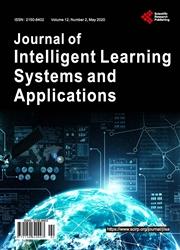Fuzzy Rules to Improve Traffic Light Decisions in Urban Roads
引用次数: 2
Abstract
Many researchers around the world are looking for developing techniques or technologies that cover traditional and recent constraints in urban traffic con-trol. Normally, such traffic devices are facing with a large scale of input data when they must to response in a reliable, suitable and fast way. Because of such statement, the paper is devoted to introduce a proposal for enhancing the traffic light decisions. The principal goal is that a semaphore can provide a correct and fluent vehicular mobility. However, the traditional semaphore operative ways are outdated. We present in a previous contribution the development of a methodology capable of improving the vehicular mobility by proposing a new green light interval based on road conditions with a CBR approach. However, this proposal should include whether it is needed to modify such light duration. To do this, the paper proposes the adaptation of a fuzzy inference system helping to decide when the semaphore should try to fix the green light interval according to specific road requirements. Some experiments are conducted in a simulated environment to evaluate the pertinence of implementing a decision-making before the CBR methodology. For example, using a fuzzy inference approach the decisions of the system improve almost 18% in a set of 10,000 experiments. Finally, some conclusions are drawn to emphasize the benefits of including this technique in a methodology to implement intelligent semaphores.模糊规则改进城市道路红绿灯决策
世界各地的许多研究人员都在寻找解决城市交通控制中传统和最新限制的技术或技术。通常,当这些流量设备必须以可靠、合适和快速的方式进行响应时,它们会面临大量的输入数据。正因为如此,本文专门介绍了一项加强红绿灯决策的建议。主要目标是信号灯可以提供正确和流畅的车辆机动性。然而,传统的信号量操作方式已经过时。我们在之前的一篇文章中介绍了一种方法的开发,该方法能够通过采用CBR方法基于道路状况提出新的绿灯间隔来提高车辆的机动性。然而,这一建议应包括是否需要修改这种光照持续时间。为此,本文提出了模糊推理系统的自适应性,以帮助决定信号灯何时应根据特定的道路要求固定绿灯间隔。在CBR方法之前,在模拟环境中进行了一些实验,以评估实施决策的针对性。例如,在一组10000个实验中,使用模糊推理方法,系统的决策提高了近18%。最后,得出了一些结论来强调将该技术纳入实现智能信号量的方法中的好处。
本文章由计算机程序翻译,如有差异,请以英文原文为准。
求助全文
约1分钟内获得全文
求助全文

 求助内容:
求助内容: 应助结果提醒方式:
应助结果提醒方式:


